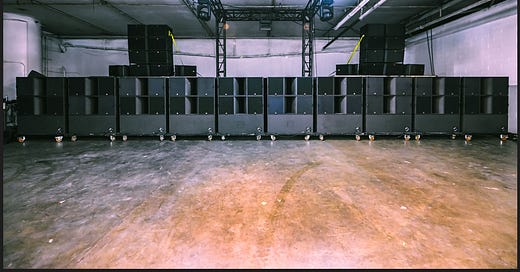Zak Khutoretsky, more commonly known as DVS1, played techno of the purest and hardest variety from 3am until 7.35am on Saturday morning, January 25, 2025, subjugating and crushing dancers between his decks of steel and his throbbing wall of sound. I've danced for seven hours without stopping (Despacio Miami). I've danced for 10.25 hours with a few water breaks (Stereo Montreal). But DVS1’s 4.5-hour set felt like the BDSM of dance music -- I was bound, slapped, punched, kicked, and assualted (with my permission). At multiple points in the night, I almost said my safe word, but I stuck it out, and though I suffered soreness for days, I think I might want to go back for more.
Wall of Sound: concept, hype, and promise
Explaining the Wall of Sound Concept (pictured above in the warehouse where we attended our event), Khutoretsky has said, "The sound system should be as big as any of the DJs on the flyer. In its own right, it should be a headliner. It should be. And if you can promote it to that level and then deliver it to that level, it becomes important. It becomes an aesthetic that people have to care about."





